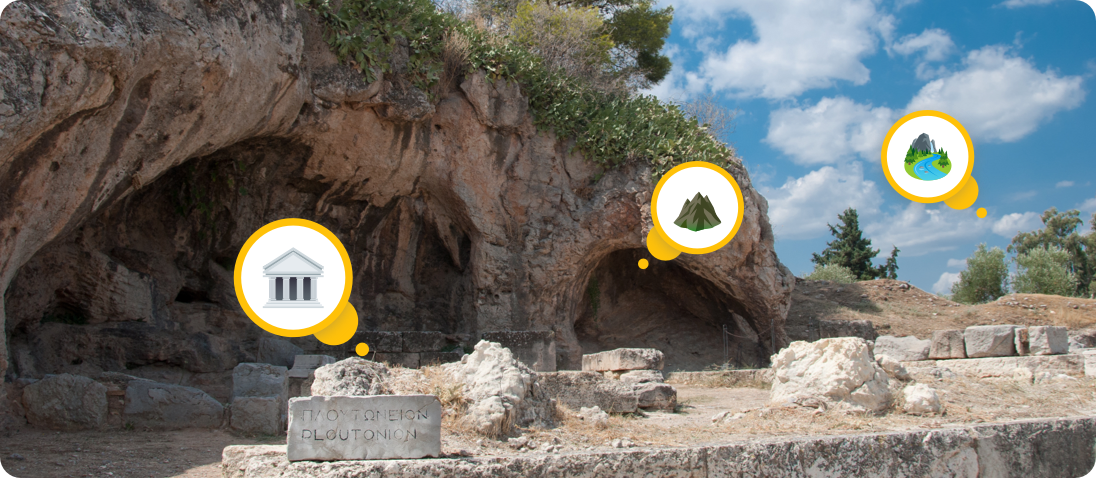The Forbidden Festival: Unveiling the Secrets of the Eleusinian Mysteries
January 25, 2023 . 3 min read . Author: Stephen Constantine

What happens in the walls of the Eleusinian Temple stayed in the walls of the Temple.
What were secrets so powerful that the initiates were sworn to secrecy by Athenian law- even on the threat of death?
For centuries, scholars have been trying to uncover the secrets of the Eleusinian Mysteries, the most revered and secretive of all the ancient Greek festivals. Celebrated annually for at least a thousand years until 329 CE, the multi-day event originated in the town of Eleusis. The festival was centered around the myth of Demeter and her daughter Persephone and the secret rites were designed to evoke an overwhelming and ineffable experience. What happened during the festival and what secrets the initiates witnessed remain largely shrouded in mystery to this day.
The course of Eleusinian Mysteries
To gain entry to the festival, participants had to prepare for at least half of the year and nurture themselves spiritually. On the day before the proceedings began, a procession of mysterious “holy things” made its way from Eleusis to Athens and stopped at the Sacred Fig Tree, where Demeter was said to have rested and been taken care of by Phylatos. Then began a multi-day series of purification rituals, fasting, animal sacrifices, and sacred offerings to Demeter. On the fifth day, a grand procession of the priestesses of Demeter and Persephone, carrying a basket of sacred objects, began their walk with thousands of initiates following them along the Sacred Way, a fourteen-mile long road connecting Athens to Eleusis
What occurred in the inner sanctum is a mystery as is the rest of the event, still, scholars speculate that it involved the re-enactment of the abduction of Persephone and her ultimate return to Demeter, symbolizing the cycle of life and death, fertility, and harvest. The Homeric Hymn to Demeter tells the story of Demeter’s extreme distress after the abduction of Persephone by Hades to the underworld. Zeus eventually intervened, ordering Hades to release Persephone. But the goddess had already eaten a pomegranate seed offered by Hades and, as a result, was bound to stay in the underworld for half of the year.
The ancient authors write of the Mysteries with a sense of awe and reverence, the transformative power of the ritual was apparent. Plutarch wrote of the Eleusinian Mysteries, “‘they fill the soul with a holy dread and a certain kind of awe, and they make us hate the life of vice and love the pursuit of virtue.”
The impact of Eleusinian Mysteries on modern art
The impact of the Eleusinian Mysteries on modern thought is evident in the contemporary imagination. The festival transformed the initiates and removed their fears of death, providing them with a sense of hope and comfort in the afterlife. Their influence continues to be seen in literature, art, theater, and music. The story of Demeter and Persephone has been re-told in books such as Margaret Atwood’s The Penelopiad and Madeline Miller’s Circe. Depictions by artists such as Dante Gabriel Rossetti and Frederic Leighton. The 1997 movie “The Fifth Element” features a scene of a priestess holding a sacred basket of Demeter’s sacred objects, much like the one described in the Homeric Hymn to Demeter.
In a world of rapidly changing religious and political landscapes, the Eleusinian Mysteries remind us that even the Gods can be subject to the cycle of life and death that we all experience.
Check out our Mystery Map on YouMap to learn more about our Mysterious World!
Get the App and Join in ! With our app, you can help us complete our vision of mapping all the world’s mysteries in one place. Join us in this mission and benefit from discovering new and exciting mysteries, sharing your own insights and experiences with others, and potentially even receiving exclusive access to special features or rewards. Together, let’s uncover and shed light on our world’s mysteries – join us on YouMap now!
You may also be interested in the National Cocktail Day 2023
